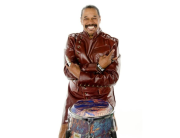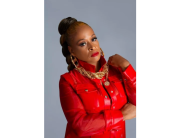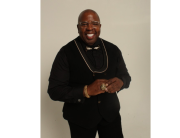In the growing wave of African cinema reaffirming control of its historical narratives, Rumba Royale appears as a remarkable effort, not only for its subject but also for the layered casting choices that shape its story. Among them is the Congolese artist Anzor Alem, whose presence in the film adds a local lens to a project aimed at reframing the colonial past through Congolese music and performance.
Set in 1959 in Leopoldville, shortly before the independence of the Democratic Republic of the Congo, Rumba Royale combines historical drama and musical stylization to explore the intersections of resistance, identity and artistic expression under colonial rule. Directed by Hamed Mobasser and Yohane Dean Lengol, the film builds its story around a rumba nightclub that doubles as a space of political subversion.
Alem, originally from Kisangani and known for his multidisciplinary work through music and cinema, embodies one of the recurring figures of the nightclub – a role that, according to sources close to the production, required fluidity not only in performance but also in cultural memory. His involvement reflects a broader casting approach that gave priority to lived experience and linguistic authenticity over the power of the stars. “We launched for resonance, not just recognition,” Mobasser said at a panel at the AfroBerlin festival.
Although much of the attention was focused on Fally Ipupa’s transition to theatre, Alem’s inclusion underlines the production’s commitment to finding talent within the Congolese cultural ecosystem. His previous work – largely independent and musical – places him within a young generation of artists navigating the postcolonial identity through hybrid forms.
Rumba Royale is produced by a transnational collective, including Rodeo Chameleon Productions, Emotive Productions, Tosala Films and France Pathé, which has recently expanded its African operations. The release of the film is scheduled for December 12 in several African territories, distributed by Pathé Touch Afrique.
According to producer Kevin Dwyer, the film was developed both as a “cultural artifact” and a “model of feasibility” for African cinema distributed on the continent. The shooting took place in several Congolese cities, integrating historical consultants, the contribution of the community and linguistic specialists to ensure fidelity to the realities of the time.
It remains to be seen whether Rumba Royale is artistically or commercially successful. The film has not yet been the subject of extensive critical examination, although the first screenings, especially at AfroBerlin, attracted significant public engagement. Some industry observers have highlighted the film as part of a broader trend towards Africa-based decentralized storytelling infrastructures.
For Alem, this role marks a departure from his recent projects centered on music and a transition to long, dramatic narration. It is not yet clear whether this signals a sustained change in his artistic trajectory or a unique cinematographic adventure. However, in the context of Rumba Royale, his participation illustrates the broader ambition of the film: to tell Congolese history not through imported frames, but through the voices and bodies of those who inherit it.
While African cinema continues to push for autonomy on form and function, Rumba Royale – and by extension, the role played by artists like Alem within it – raises lasting questions. Who has the right to tell the stories of colonial heritage? And how could popular genres such as the musical thriller serve as ships of historical reflection?
Although the final answers may take time, the film’s production model and casting philosophy suggest that a change is underway – a change in which the artistic agency is not incidental, but fundamental.
Written by:Caroline Ntumba







Add Comment
You must be logged in to post a comment.